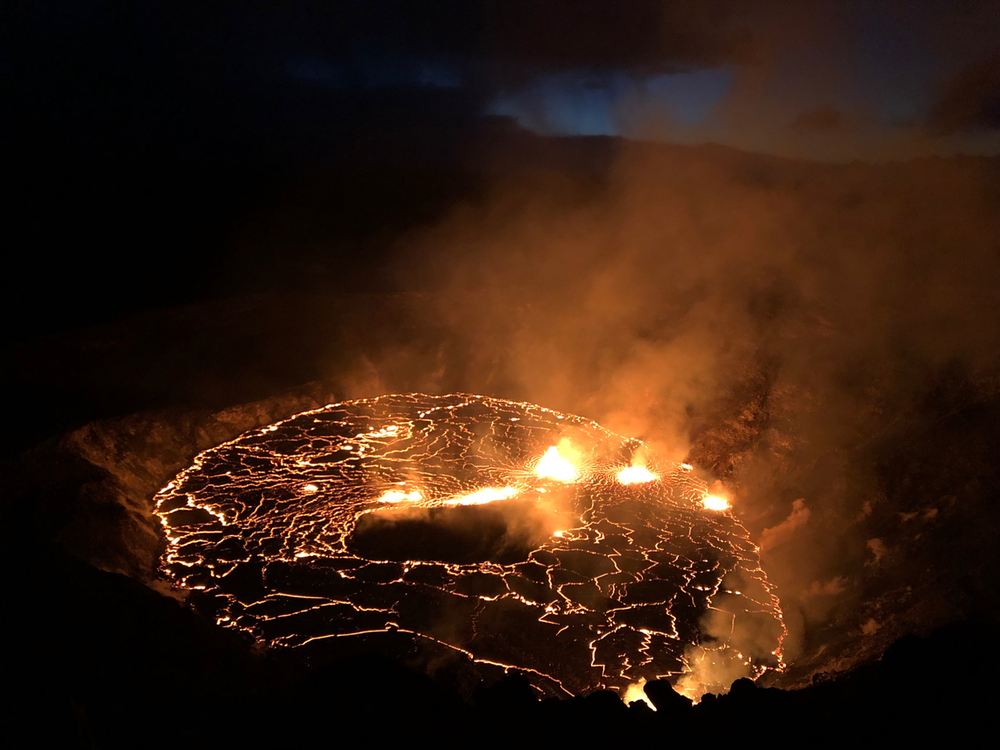On Sunday, the Kilauea volcano in Hawaii erupted for the fifth time in nearly four years, illuminating the night with lava fountains captured on video.
The U.S. Geological Survey released a video early on Tuesday depicting magma erupting from the summit crater of Hawaii Volcanoes National Park and feeding a lake of molten rock.
Kilauea, one of the most active volcanoes on Earth, resumed erupting Sunday afternoon after a two-month hiatus.
When witnessing the eruption, the National Park Service (NPS) urged visitors to “stay safe and be respectful of the dangers and sacredness of Kilauea.”
While the Keanakkoi viewing area is closed due to high concentrations of sulfur dioxide and volcanic particles, the National Park Service stated that the best places to view the lava lake and fountains are Ukahuna, Klauea Overlook, and areas along the Crater Rim Trail, with the caveat that conditions can change.
On Monday, the alert level for Kilauea was reduced, as no infrastructure was in danger and there was no threat of significant ash emissions into the atmosphere outside of a small area within Hawaii Volcanoes National Park.
Later on Monday, state health officials reported that the eruption had spread vog, or volcanic smog, to some areas of the Big Island, resulting in poor air quality. The emission of water vapor, carbon dioxide, and sulfur dioxide gas from Kilauea causes the vog.
Kilauea erupted for several weeks in June, demonstrating red lava fountains that posed no threat to nearby communities or structures.

